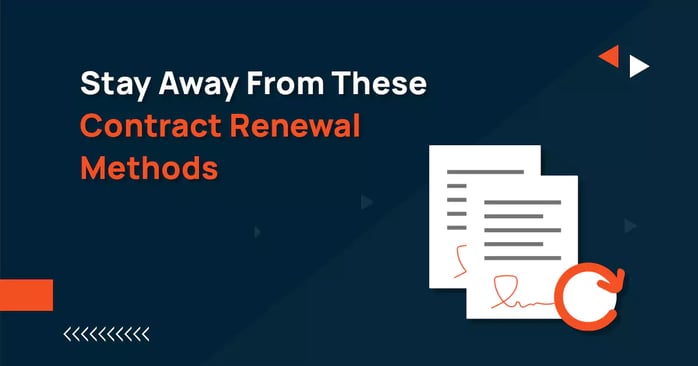Are you ready to learn more?
Talk to our contract management experts today!
Policy management resources, best practices articles, guides and how-to's can help optimize your processes.
Contract management resources, articles, guides and how-tos can help you improve efficiency.
Resources, best practices, articles, guides, and how-tos to effectively manage incidents.
Articles and guides on conflict of interest disclosure on how to properly handle potential conflicts.
Strategies on building frameworks for managing risks and staying up to date with regulatory developments.

When the ink dries on a brand new contract, legal and compliance teams rejoice that the lengthy process is over. During the creation, negotiation, review and approval stages, a lot of hard work and resources making each contract come to life. Eventually, these contracts are set to be renewed, requiring immediate action to make sure these contracts remain updated and that all verbiage remains appropriate.
But what happens if these contracts are not renewed? Or even worse, potentially auto-renewed without your notice? Contracts set to be renewed can quietly change statuses if your organization isn’t using some form of contract renewal tool or software. The legal ramifications of a contract that was auto-renewed that wasn’t supposed to be so can be incredibly costly to any business.
There are many different ways to manage the contract renewals in your organization. Although some methods are better than others, some popular choices can actually lead to increased risk factors. And the ineffective contract renewal process hurts your ROI. Understanding which of these choices are inept for contract renewals can help you decide on a stronger platform to leverage. A few of these methods include:
Calendars have been around for ages and are a great way to organize any upcoming deadline or memorable date. Their place is ingrained within modern businesses, but there are drawbacks to using them as a way to keep up with contract renewals. For one, calendars require users to constantly update them with dates and information regarding upcoming deadlines. They do offer some basic notifications to alert you of these upcoming deadlines, but they only do so if you’ve manually entered specific times to receive notifications. Meanwhile, automated systems communicate the status of every contract and their upcoming deadlines on a daily basis. Additionally, calendars have no real way of sharing documents to enable content collaboration.
Whether your organization is using some other manual entry system, like Microsoft Excel, you should be wary on how they manage contract renewals. Implementing all of the information regarding a contract in a spreadsheet is certainly a good idea, but requires constant maintenance and offers no notifications or alerts. Excel spreadsheets can be easily exchanged between all parties, but ensuring proper version control becomes more difficult as numerous documents are being circulated. Plus, if you’re a large organization with hundreds, if not thousands of contracts, manually entering data and searching for information in these enormous spreadsheets can be a nightmare for organization’s sake.
Solely relying on email communication to handle upcoming contract renewals can be a risky endeavor for an organization. Emails come up short when handling these types of documents, and struggle to ensure proper version control and document security. Emails offer no real location to share and work on documents either, requiring users to use another program like Microsoft Word or a PDF editor to proceed with contract renewals. Leveraging emails as a supplement to an automated system works great in providing notifications, but should not be the sole platform of use when dealing with contract renewals.
Instead of using inept contract renewal platforms, ConvergePoint’s Contract Management Software and Office 365 Add-In leverage the content collaboration elements of Microsoft SharePoint and provide real-time data regarding the status of all contracts in your organization. Our three modules simplify the contract creation, management and renewal phases, giving businesses a stronger grasp on their contract lifecyles.
Talk to a compliance specialist to learn how our Contract Management expertise can be applied to your business by scheduling a demo now.
Are you ready to learn more?
Talk to our contract management experts today!